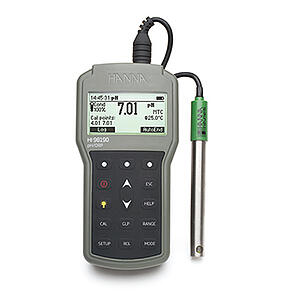 Dyes have been used on textiles for over 6,000 years, originating in the time of the Neolithic period. Textile dyes are a core aspect of the textile industry for their ability to enhance the aesthetic appeal of fabrics. Dyes are traditionally derived from animal or plant products, although synthetically produced dyes have become popular to increase the variety of colors and resilience of the dyes. Often, dyes require a mordant; a mordant is a substance, typically an inorganic oxide, which fixes the dye to the textile. A mordant may also be used help to retain the intensity of dyes through repeated washes.
Dyes have been used on textiles for over 6,000 years, originating in the time of the Neolithic period. Textile dyes are a core aspect of the textile industry for their ability to enhance the aesthetic appeal of fabrics. Dyes are traditionally derived from animal or plant products, although synthetically produced dyes have become popular to increase the variety of colors and resilience of the dyes. Often, dyes require a mordant; a mordant is a substance, typically an inorganic oxide, which fixes the dye to the textile. A mordant may also be used help to retain the intensity of dyes through repeated washes.
Dyes are applied to textiles through a wide variety of techniques. One common technique is the use of reactive dyeing tanks. Reactive dyes are substances that attach to fabrics by way of a chemical reaction; the dye chemically bonds to the fiber and is much more resilient to being washed, as opposed to dyes that are simply adsorbed.
This method is used most often for cellulose fibers such as cotton or linen. In these cases, the dye is added to an alkaline bath where the textile will be treated. The high pH of the bath allows the formation of a cellulosate anion from the cellulose in the plant fiber. This anion binds with the dye in solution to form a permanent color. The optimal pH of many of these dyes is between pH 10 and 11.5. To maintain the correct pH of the bath, sodium carbonate is added.

A dyer reached out to Hanna instruments for a method to spot check the pH of their reactive dye baths. They needed a portable meter, as several tanks would need to be spot checked at the dyeing facility. Hanna recommended the Professional Waterproof Portable pH/ORP Meter - HI98190.
As an IP67 rated waterproof meter, the customer was comfortable having their operators use it on the production line. Since it is necessary to bracket results with calibration points, the customer appreciated that the meter can be calibrated at pH 7.01, 10.01, and 12.45. Using these buffers ensured that accurate measurements could be taken across their expected range of bath pH values.
The HI98190 is supplied with the Titanium Body pH Electrode for Wastewater - HI12963. The durable titanium body, protected glass bulb, built-in temperature sensor, and gel electrolyte make the HI12963 ideal for industrial applications. Hanna also suggested the HI70681L Cleaning Solution for Ink Stains. This cleaning solution contains ethanol which helps to dissolve any ink deposits on the electrode. The cleaning solution was appreciated by the customer as it helped to reduce the response time when used routinely. The customer was pleased with the products and support offered by Hanna.
As a leader in innovation Hanna Instruments developed the HALO Wireless pH Meter, which uses Bluetooth Smart Technology to connect to Apple and Android devices running the Hanna Lab App.
Continuing with this tradition, the Hanna Instruments Blog is devoted to sharing the latest in product overviews, how-to guides, and industry specific news to our ever-growing audience.
Contact us at sales@hannainst.com.
